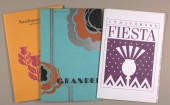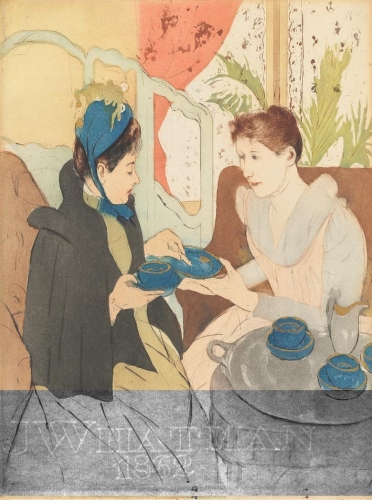Conservation Division
National Gallery of Art
2000B South Club Drive
Landover, MD 20785
[email protected]
Paper Sample Collection

The conservation division gathers examples of papers used in modern works of art. The Paper Sample Collection can help researchers to identify the paper in a specific print or drawing, or trace broad changes in the characteristics of artists’ papers over time. The collection includes only documented samples, identified by the manufacturer or distributor, and covers mostly fine- and student-grade artists’ papers available in the United States. Hand papermakers, manufacturers of machine-made papers, fine-paper merchants, distributors, and collectors have generously donated the core of the collection. In addition, the division purchases older examples as they come on the market.
The collection follows the rise of the paper sample book at the end of the 19th century. Among the earliest encyclopedic gatherings of different types of paper in the collection is Richard Herring’s A Practical Guide to the Varieties & Relative Values of Paper, published in London in 1860. In about 1900, U.S. manufacturers and distributors, beginning with the Strathmore Paper Company and the Japan Paper Company, started to make sample booklets to promote their products. In addition to bound swatches, the booklets often include a wealth of information on sizes, weights, colors, and prices of the papers for sale.
The Paper Sample Collection contains more than 2,600 booklets, bound volumes, and individual sheets of paper from over 160 companies. Papers come primarily from the U.S. and Europe, with a significant addition from Japan and other Asian countries. Scholars can search a database by country, manufacturer, date, name of the sample book, papermaking process, and watermark, among other fields. The booklets have not been scanned digitally, though images of some watermarks are included. The aesthetic qualities of the paper—its surface texture, suppleness, and feel—can only be experienced in person.
Researchers can also consult the extensive collections of 19th- and 20th-century paper trade directories, volumes on paper history, and watermark albums in the National Gallery of Art Library and the paper conservation department library.
Identifying Artists' Papers

Visiting the Art Materials Research and Study Center
Open to individuals by appointment only. For an appointment or for more information about the collections, send an email to conservation staff at [email protected]. In your email, please provide details about the subject and purpose of your research.
- Visit the Works on Paper page
- To explore art materials visit the Art Materials Research and Study Center page